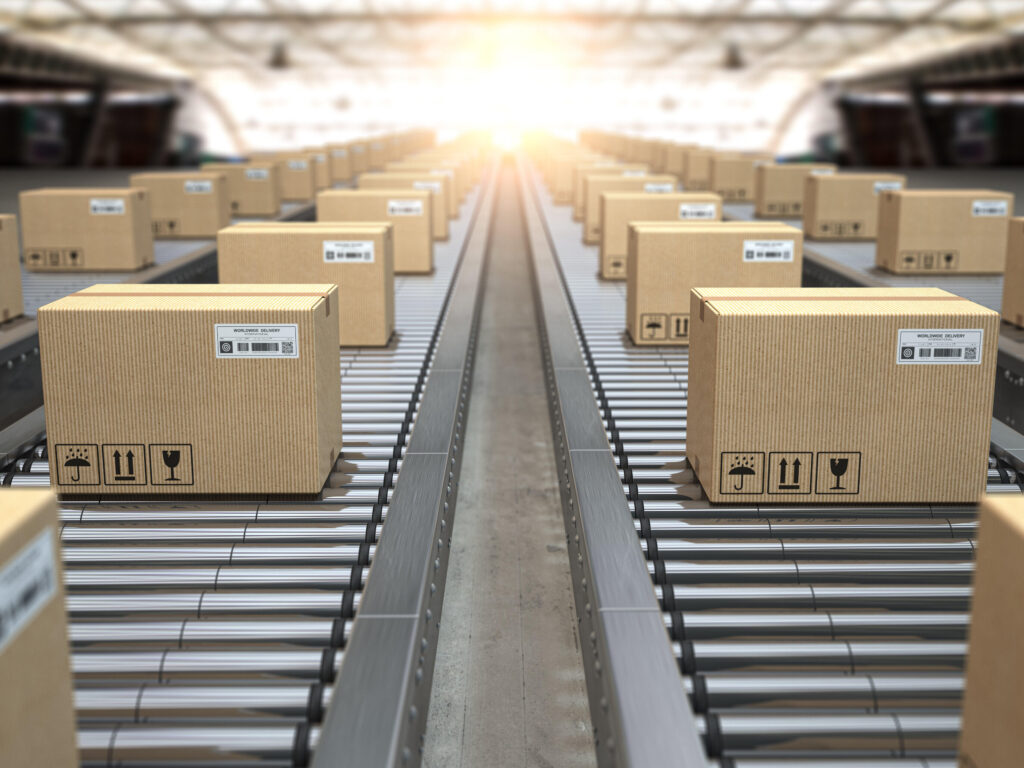In the early stages of building an e-commerce business, packaging operations are not top priority. Time passes, volumes increase. Packaging can become a bottleneck if benches are not designed to cope with a continuous flow of work.
 As the business grows…
As the business grows…
…Orders start to come in, there is a lot of variety in order sizes, types, packaging materials but not yet enough volume to provide specialist facilities. Systems and processes are struggling as they are no longer fit for purpose. Sounds familiar? It becomes clear that focused attention must be given to the design and flow of the products through the packaging facility.
- Are consumables readily available and on hand?
- Are you mixing other activities with the packing process?
- Is the packaging process suitably set up for the people involved? i.e., is it ergonomically optimal?
- Is the sorting process for batch-picked orders efficient?
Possible actions to take:
- Where systems and processes are convoluted, do a time-based process map, identify and eliminate unnecessary clicks, scrolling, double entry, and other time-wasting actions such as generating additional labels.
- Ensure a well organised flow to packing benches, sufficient work buffers and promote multi-skilling of workers
- Standardise the design of packing benches and make sure they are cleared by users when finished. Remember, a place for everything and everything in its place. Keep identifying problems and finding improvements.
- Design specialised packing stations with consumables readily on hand
- Allocate specialised pack benches for single item orders – a good process for single items orders might be batch pick them into a container and move to dedicated SIO packing bench. Next, scan the item and use an order look-up to print the relevant paperwork / carrier label. Place the item in the bag with the paperwork, apply label and place on takeaway conveyor.
- Use an efficient method to keep orders separate or sort them out productively e.g., picking to a divided trolley or putting the batch picked items through a ‘put wall’ process.
- If you are using multiple carriers, consider how to manage the split and item types on the outgoing conveyor. Packed parcels should be placed on a conveyor or directly into a carrier cage depending on parcel size and number of carriers used, etc.
As the business grows further…

There is a point at which you must eliminate manual tasks in the packaging process. When your volumes are high enough and if your products are suitable, then you might consider automating your bagging and/or boxing.
Semi-automated bagging. The bag is prepared and presented to the packer who places the item into the bag. The label is automatically applied, and the bag can be automatically taken away or dropped into a container for takeaway. This requires standardisation of bag sizes i.e., critical mass and ability to separate orders by cube. It typically offers a rapid payback against manual operations if your items and volumes are suitable.
Fully automated bagging. This offers the most automated solution but at a much higher capital investment. It is an in-line solution which shapes the bag around the item. The technology vendor may offer the supply of consumables when implementing this type of solution.
Automating the boxing of items
New technologies are available for the automated boxing of items and for automated carton erection and closure. The machine can cut a box to size and automatically lid it. At the highest level, a 3D scanner scans the item and builds packaging around it! This facility is ideal for the protection of fragile and high value products. Automation of packaging means quicker preparation, smoother transfer of parcels to the despatch area.
Consider the customer…

Consumers are demanding more efficient and sustainable packaging. They are particularly concerned about waste and prefer the use of recycled materials. Environmentally responsible packaging can be just as efficient as using conventional materials but may require some process adjustments and a change in thinking about consumables.














